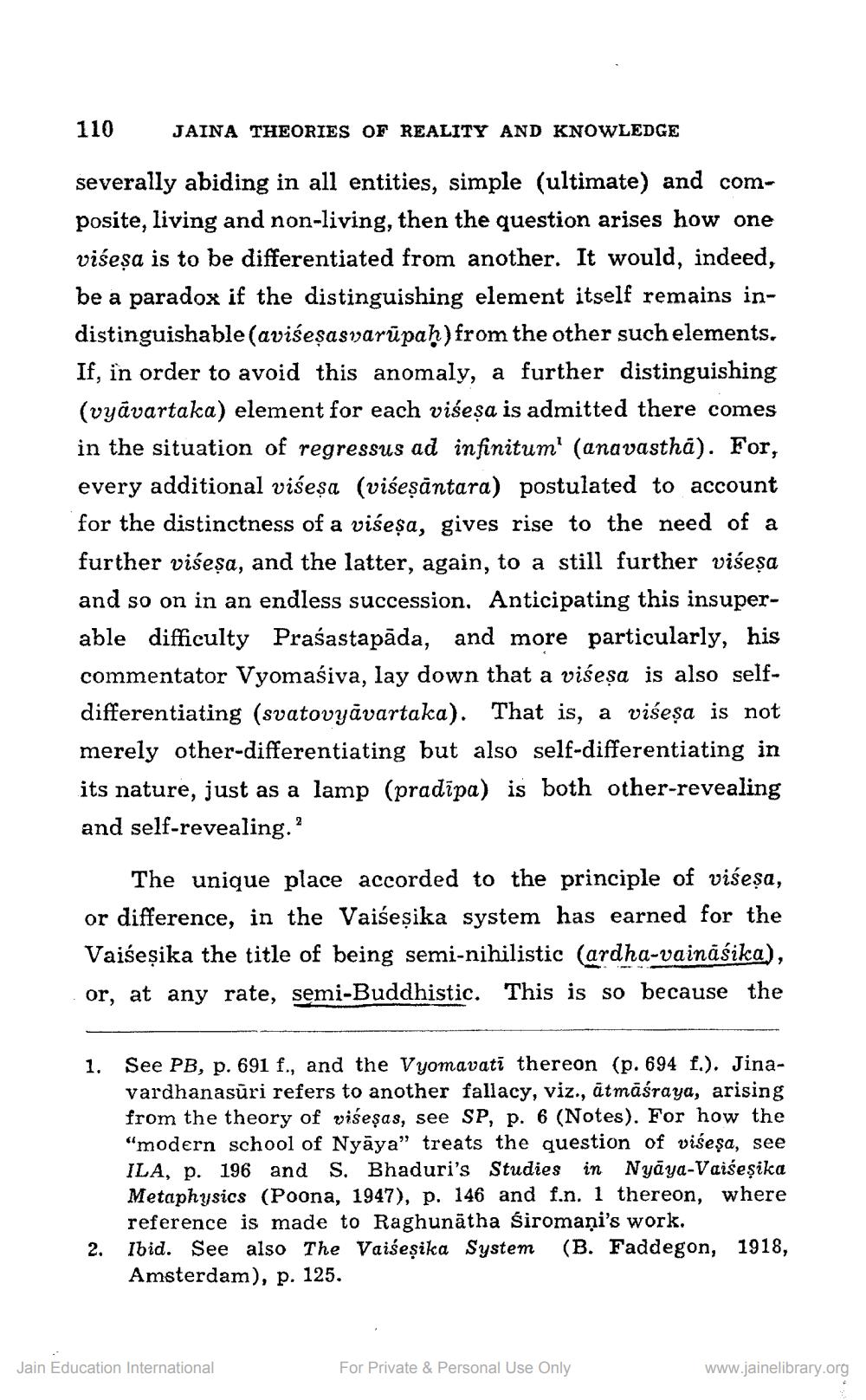________________
110
JAINA THEORIES OF REALITY AND KNOWLEDGE
severally abiding in all entities, simple (ultimate) and composite, living and non-living, then the question arises how one viseșa is to be differentiated from another. It would, indeed, be a paradox if the distinguishing element itself remains indistinguishable (avićeșasvarūpah) from the other such elements. If, in order to avoid this anomaly, a further distinguishing (vyāvartaka) element for each višeșa is admitted there comes in the situation of regressus ad infinitum' (anavasthā). For, every additional viseșa (višeşāntara) postulated to account for the distinctness of a visesa, gives rise to the need of a further viseşa, and the latter, again, to a still further viśeşa and so on in an endless succession, Anticipating this insuperable difficulty Prasastapāda, and more particularly, his commentator Vyomaśiva, lay down that a viseșa is also selfdifferentiating (svatovyāvartaka). That is, a viseșa is not merely other-differentiating but also self-differentiating in its nature, just as a lamp (pradīpa) is both other-revealing and self-revealing.”
The unique place accorded to the principle of visesa, or difference, in the Vaiseșika system has earned for the Vaišeșika the title of being semi-nihilistic (ardha-vaināśika), or, at any rate, semi-Buddhistic. This is so because the
1. See PB, p. 691 f., and the Vyomavati thereon (p. 694 f.). Jina
vardhanasüri refers to another fallacy, viz., ātmāśraya, arising from the theory of viseșas, see SP, p. 6 (Notes). For how the "modern school of Nyāya" treats the question of višeşa, see ILA, p. 196 and S. Bhaduri's Studies in Nyāya-Vaiseșika Metaphysics (Poona, 1947), p. 146 and f.n. 1 thereon, where
reference is made to Raghunatha siromaņi's work. 2. Ibid. See also The Vaiseșika System (B. Faddegon, 1918,
Amsterdam), p. 125.
Jain Education International
For Private & Personal Use Only
www.jainelibrary.org




